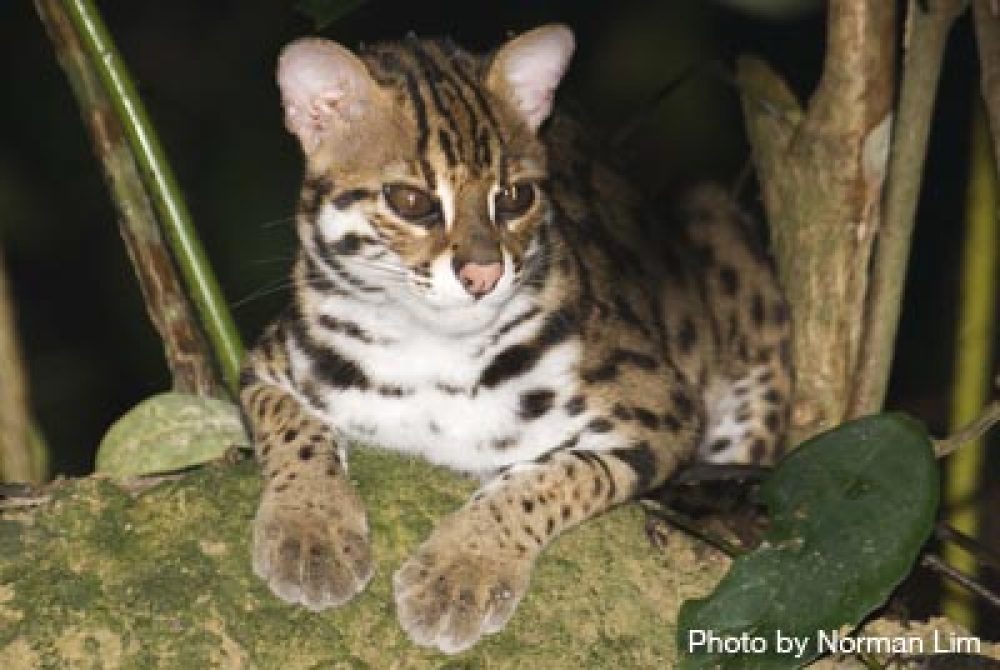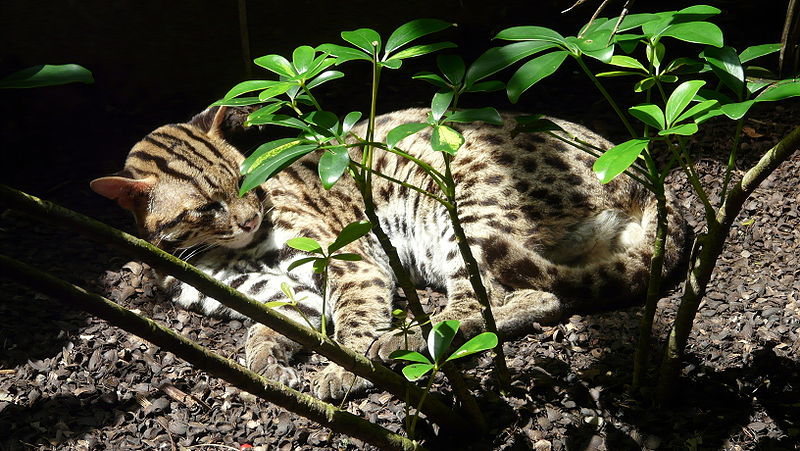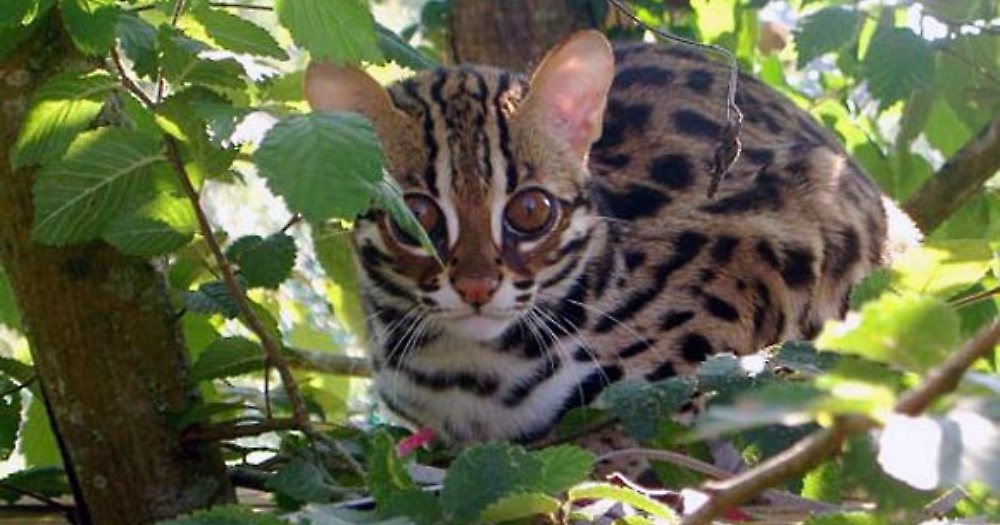The leopard cat is believed to be the last wild cat in Singapore.
It can rarely be found on mainland Singapore, but the cat is possibly still thriving on Pulau Tekong.
About the size of a domestic cat
According to Infopedia, the leopard cat is about the same size as a domestic cat.
It can grow up to 56cm long with a 27cm-long tail.
The adult cat weighs about 2kg.
The leopard cat has yellow or reddish brown fur, white underparts and black spots all over.
It also sports white spots on its ears, and distinct black stripes on its head and the back of its neck.
 Via.
Via.
The nocturnal cat spends most of the day in its den, which can be a hole in a tree or cave.
It can climb and swim very well, and it preys on small animals such as rats and birds.
Found thriving on Tekong in 2012
Like many wild animals, the leopard cat is endangered in Singapore due to the loss of its natural forest habitat.
However, Marcus Chua, a researcher with the National University of Singapore, found that the cats were thriving on Pulau Tekong in 2012.
Back then, Chua conducted a study that estimated that there were no more than 20 leopard cats living on the Singapore mainland.
However, he recorded 29 leopard cats on Pulau Tekong, which is 32 times smaller than the mainland.
 Via Wikipedia.
Via Wikipedia.
Chua used several methods to track and study the leopard cats in 2012.
First he put up camera traps which captured photos of animals whenever they passed in front.
He also conducted night surveys to observe the nocturnal cats.
Lastly, Chua collected over 60 pieces of leopard cat poop to analyse their eating habits and DNA.
Leopard cats thrived on the island because of the lack of animals such as civets, which compete for the same food.
Also, Pulau Tekong is covered mainly by secondary forests, which provides the cats with a habitat.
Leopard Cats found on reclaimed parts of Tekong
Interestingly, during his study, Chua found that leopard cats were also present on reclaimed parts of Pulau Tekong where forests had grown.
"But this was on land that was reclaimed over 20 years ago. We are not likely to find leopard cats on recently reclaimed parts as there is no forest cover," Chua wrote in an email to Mothership.sg.
The cats were also detected in secondary forests on the original part of the island, as well as at an oil palm plantation.
While it may seem strange to find wild cats in a human-modified landscape, the cats were actually attracted by the rodents that feasted on the plantation fruits.
Seven years on, Pulau Tekong has undergone heavy land reclamation.
Are Leopard Cats still thriving on the island?
According to Chua, who is based overseas at the moment, there isn't an active study on leopard cats currently.
However, he is still compiling records of the cats and plan to resume studying them when he returns.
Leopard cats on Pulau Tekong should be able to persist as long as their forested habitat remains intact, Chua said.
"Based on the latest (2019) satellite image of the island, it seems that the secondary forest on Tekong island still remains despite the heavy modification of the coastline of the island," he wrote.
You can read Chua's 2012 study on Leopard Cats here.
 #SG200 is not a celebration. It's a commemoration. What's the difference? Click the logo. Maybe these articles might help.
#SG200 is not a celebration. It's a commemoration. What's the difference? Click the logo. Maybe these articles might help.
Top image via Bengal Cats
If you like what you read, follow us on Facebook, Instagram, Twitter and Telegram to get the latest updates.
